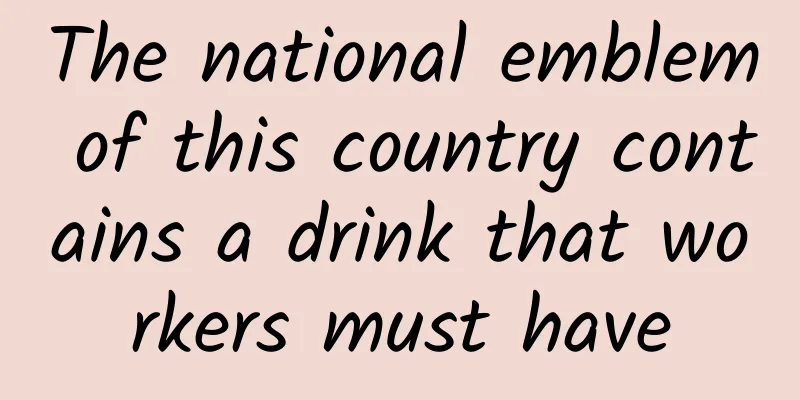The national emblem of this country contains a drink that workers must have

|
The national emblem of the Federative Republic of Brazil looks like this👇 The branches on the left and right are coffee and tobacco. Wikimedia Commons The coffee fruit is actually sweet! As the card says, the medium-grain coffee (Coffea canephora) known as "Robusta" is actually more resistant to diseases and pests , and even has advantages such as high yield and high temperature resistance . So why hasn't it replaced Arabica to this day? The root cause is flavor. Robusta’s flavor is not very good. Relatively speaking, this type of coffee has less aroma and acidity, a distinct bitterness , and a taste similar to burnt rubber . However, there are some special medium-grain coffee varieties, and maybe one day in the future Robusta will make a comeback. Robusta coffee berries|2010 Jee & Rani Nature Photography Both Arabica coffee and cane coffee belong to the genus Coffea in the Rubiaceae family. This genus has more than 120 members, and broadly speaking, all of these plants can be called "coffee" . However, the seeds of most coffee plants have more or less defects, such as bad smell. Therefore, there are basically only these two types of coffee that can enter our daily life. Coffee berries from Bali | Jmhullot / Wikimedia Commons In addition to the fragrant seeds, both small-grain coffee and canephora coffee also have beautiful flowers and delicious fruits. The flowers of small-grain coffee have an aroma similar to jasmine. The coffee fruit is also very interesting. I was shocked when I first tasted it. The thin pulp of the coffee fruit was sweet . This was really unexpected and completely subverted the impression of coffee. If it weren't for the caffeine in coffee, this fruit might have appeared in our lives as a fruit. Arabica coffee flower | Marcelo Corrêa / Wikimedia Commons Generally speaking, there are two seeds in a small coffee fruit , so the coffee beans we see are semi-circular. Of course, there are some special cases - a seed fails to develop, and one seed occupies all the space in the fruit, so small round beans are produced. Cross section of a coffee cherry | Michael.C.Wright / Wikimedia Commons Sheep eating coffee is just a legend Merchants who sell coffee will tell a story about the origin of coffee: an Ethiopian shepherd discovered that sheep became excited after eating coffee berries, so he picked them himself and ate them. This is how coffee began its journey in the human world. However, just like the saying that "Adam and Eve ate the forbidden fruit, which was an apple" was invented by later generations , the story of the shepherd eating coffee beans is not original. When did this story appear? It was probably in 1671, when coffee became popular. Isn't it a coincidence? Yes, this is just like "an apple a day keeps the doctor away", but it is just a big advertisement . Sheep: "Where's my endorsement fee?"|Pixabay Another legend about the origin of coffee is a little more credible: a miracle doctor who saved people through "prayer" (which doesn't sound that reliable) was too hungry, so he chewed coffee beans and got excited. But the raw coffee beans didn't taste good, so in order to make them taste better, he roasted them; the beans were too hard, so he boiled them, and brown soup appeared. Grinding, filtering, and brewing coffee | pixabay According to the history that can be verified now, humans began to drink coffee on a large scale in the 15th century AD , and the first popular area was Yemen . Soon, coffee spread to the Arab region, and in the late 16th century, it gradually expanded to Iran and Turkey. In 1645, the first coffee house in Europe opened in Rome, and soon coffee became a drink for the European upper class . Seeing the profitability, the Dutch brought coffee seedlings to Java and Sri Lanka, and began importing coffee beans from Java and Sri Lanka in 1711. At this time, coffee was already a very popular drink in Europe. Today's coffee flavor map | torchcoffee.com Interestingly, although coffee houses were opened in Britain in 1654, coffee was challenged by tea. In the same period, coffee was the drink of the upper class in continental Europe. However, tea was actually consumed in greater quantities in Britain. The British established a complete tea production system in India, and tea was the drink of the upper class in Britain . Coffee was brought to the New World with colonial expansion. After the Boston Tea Party , coffee sales skyrocketed, and drinking coffee was seen as a sign of support for independence. Coffee or tea? That is the question | Midori / Wikimedia Commons At the same time, coffee was brought to the colonies in the Caribbean by the French and began to be planted. It soon became the core area of coffee production in the world. In 1788, half of the world's total coffee production came from French Saint-Domingue, while Brazil was still a wasteland for coffee cultivation at that time. It was not until 1822 that Brazil began to grow coffee on a large scale, and it was another 100 years later that Brazil became an exporter that controlled 70% of the world's coffee production. So, is cat poop coffee good? "Cat poop coffee" was once very popular. First of all, it should be said that cat poop coffee does not come from cat excrement, but from palm civet excrement. The Dutch opened coffee plantations in Indonesia, where the rainforest was once the home of palm civets. After the coffee plantations were established, palm civets, who had lost their habitat, quickly learned to look for food in the coffee plantations. After all , the sweet coffee berries can still provide some calories. Palm civets, who were originally indigenous people, were considered thieves by the farmers . When the farmers went to expel palm civets, they found a lot of palm civet excrement with coffee beans. The coffee made with these coffee beans is more delicious. Coffee beans in palm civet poop | Wibowo Djatmiko / wiki commons Many people speculate that the coffee beans are fermented in the civet's digestive tract, which produces the special flavor. I believe that the original civet coffee tasted good, but it was not the result of fermentation. The reason is simple - civets will choose the most mature coffee berries as their food and excrete the seeds in a concentrated manner. In other words, civets are like coffee sorters , selecting high-quality coffee beans. However, today's civet coffee is no longer produced in this way. Civets in cages are forced to eat raw and ripe coffee cherries, and the resulting civet coffee is nothing special. Click on the picture to see the pain that civet cat poop coffee brings to palm civets|sejibodo / Wikimedia Commons Coffee and Caffeine Coffee beans are the world's main source of caffeine. If you have to go back to work tomorrow, you may need a cup of coffee to wake up from the post-holiday syndrome. In addition to making people excited , caffeine can also enhance people's cognitive abilities in a short period of time. When adults consume between 200-400 mg of caffeine, their individual alertness and visual attention control abilities are significantly improved. Molecular formula of caffeine | NEUROtiker / Wikimedia Commons However, consuming a large amount of caffeine can cause increased heart rate, increased blood pressure, palpitations, and tremors. If you consume a large amount of caffeine for a long time, it will also affect the absorption of calcium. Long-term consumption of caffeinated beverages can also lead to addiction . Fortunately, with the normal amount of coffee we drink, the addiction is not serious and the withdrawal symptoms are relatively mild. When making latte or cappuccino, the collision of milk foam and coffee fat can draw beautiful latte art|Pexels Some people cannot stand the stimulation of caffeine but like to drink coffee. Smart businessmen have developed decaffeinated coffee. The most famous method of making decaffeinated coffee is the Swiss washed method, which uses decaffeinated green coffee beans to soak in a solution, so that the caffeine will dissolve in the solution while the original flavor of the coffee will still be retained. By the way, the production of decaffeinated tea is slightly different, after all, the tea leaves are useless after being soaked in water, so carbon dioxide is needed to extract the caffeine from the tea leaves. Author: Shi Jun This article comes from the Species Calendar, welcome to forward If you need to reprint, please contact [email protected] |
<<: Do you know the story behind Beidou satellite?
Recommend
Creative inventory of 7 major mainstream industries, all cases of information flow CTR8% are here!
I guess many optimizers have suffered from creati...
How much does it cost to be an agent for a makeup app in Cangzhou?
Why should you be an agent for WeChat Mini Progra...
Lenovo is once again making efforts in smart TV. What are the chances of the PC industry giant making a comeback against the trend?
After experiencing a series of events that have l...
AiKop | See the 72 changes of modern ships
Do you know the origin of the name "cruise s...
How to run a successful social media marketing campaign?
Product sales are not increasing? Sale! User purc...
How to create explosive and screen-sweeping content marketing?
As online marketing becomes more mobile, traffic ...
The studio often uses APP to attract new users, and sells 2000+ free shares
The studio often uses APP to attract new users, a...
Beyond 9,000 meters! Entering the deep earth! Why can "Deep Earth No. 1" break the record?
Shaya County in Aksu Prefecture, Xinjiang, is loc...
How to plan a community event with no experience?
Based on the author's thoughts and ideas from...
Counterpoint: European passenger electric vehicle sales increased 17% year-on-year in Q3 2022
According to the latest research from Counterpoin...
Still worried about promotion? Here is a list of promotion channels for your reference
For operations , user volume and revenue are the ...
iPhone 12 will be released at a different time, is Apple bowing to the market again?
It’s been a week since the grand launch of iPhone...
Windows 10 update infinite "initialization": the solution is here
Microsoft has just pushed out the Windows 10 Buil...
Japan can no longer print money? It turns out that prices have increased...
Is Japan no longer able to print money? Next year...
Google Lens feature added to the Google APP on iOS
[[252266]] In March this year, Google Lens was la...









